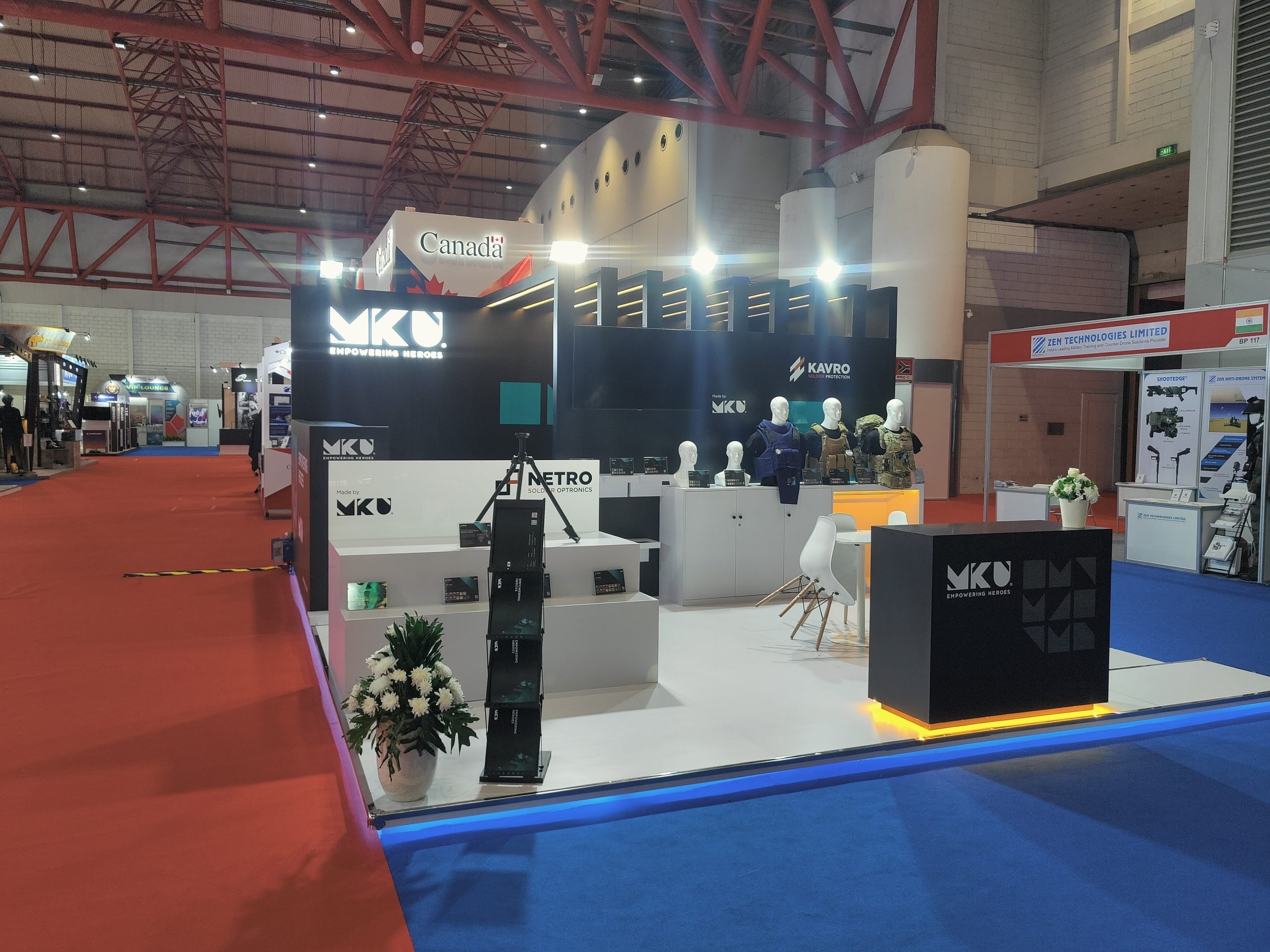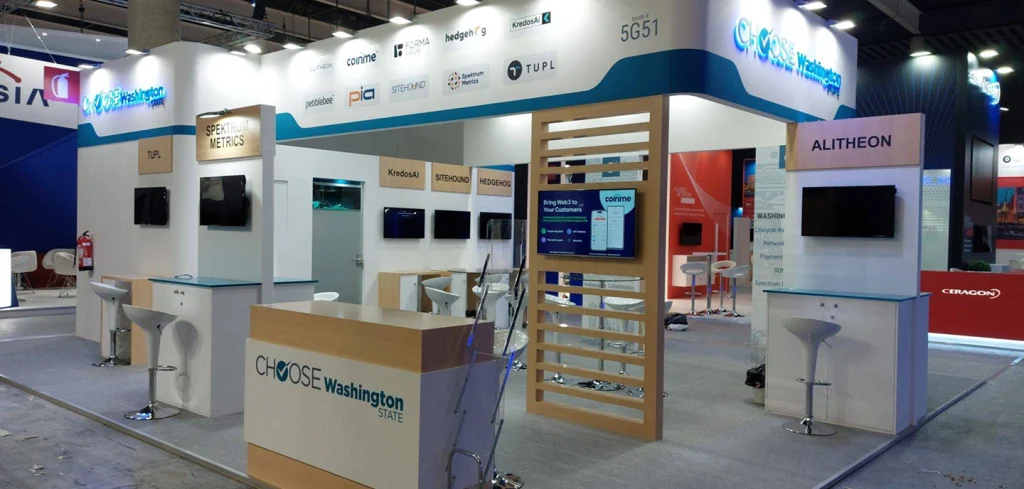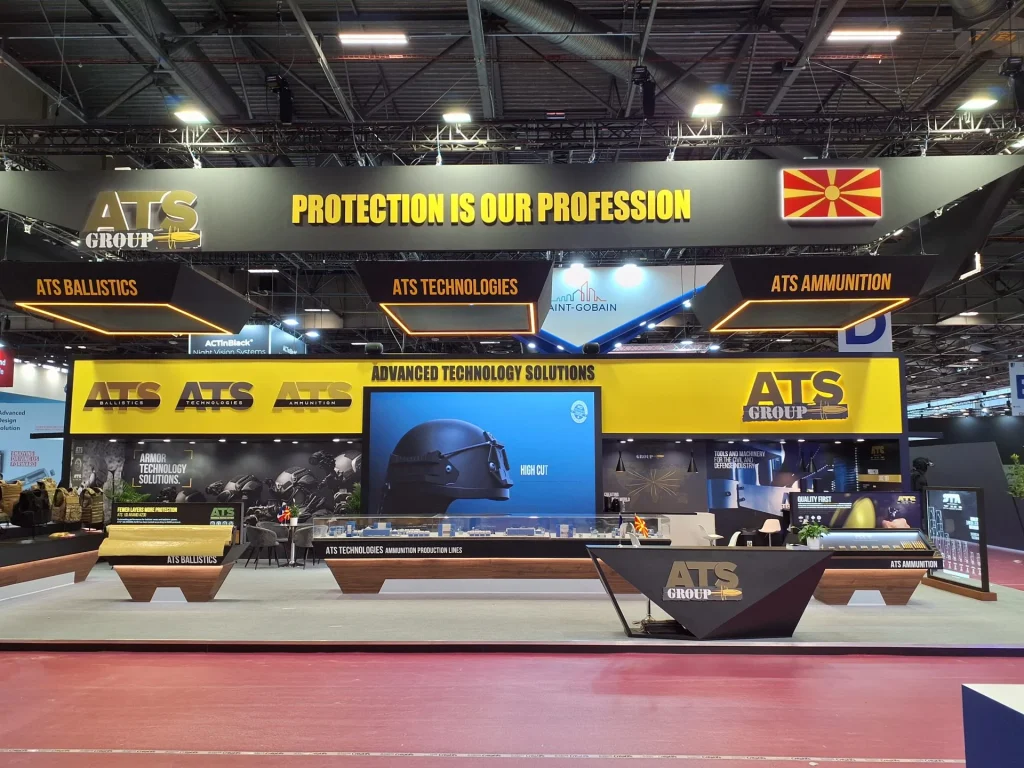
Introduction:
In the fast-paced world of global trade shows, staying ahead of the curve is essential. The International Federation of Exhibition and Event Services (IFES) offers a wealth of knowledge and resources to help companies create exhibit booths that not only captivate audiences but also adapt to changing trends and technologies.
Future-proofing your exhibit booth design is key to ensuring long-term success and maximizing your return on investment. This blog explores strategies to future-proof your exhibit booth design, drawing on insights from IFES and industry best practices.
Embracing Sustainability:
Sustainability is no longer just a trend; it is a fundamental aspect of modern exhibit design. Future-proofing your booth means integrating sustainable practices that will resonate with eco-conscious attendees and comply with evolving regulations.
- Sustainable Materials: Use recycled, recyclable, and biodegradable materials for booth construction. Sustainable options like bamboo, recycled aluminum, and eco-friendly fabrics not only reduce environmental impact but also align with the growing demand for green practices.
- Energy Efficiency: Incorporate energy-efficient lighting, such as LEDs, and consider renewable energy sources like solar panels to power your booth. Highlighting these features can enhance your brand’s sustainability credentials.
- Waste Reduction: Design modular booths that can be easily reconfigured and reused for different events, minimizing waste. Implementing digital displays and reducing printed materials also contribute to waste reduction.
Integrating Advanced Technology:
Staying ahead in the exhibition industry requires embracing the latest technologies to create engaging and memorable experiences.
- Interactive Displays: Touchscreens, interactive kiosks, and digital signage can provide dynamic and personalized experiences for attendees. These technologies allow visitors to explore products and services at their own pace.
- Virtual and Augmented Reality: VR and AR can create immersive experiences that bring your products to life. Whether it’s a virtual tour of a facility or an augmented reality demonstration of product features, these technologies captivate and educate attendees.
- Data Analytics: Utilize data analytics tools to gather insights on attendee interactions and preferences. Real-time data collection can help tailor the booth experience to individual visitors and inform future exhibit strategies.
Fostering Personalization:
Personalization is key to creating a meaningful and memorable booth experience. Future-proof your design by incorporating elements that cater to the unique interests and needs of your audience.
- Custom Content: Use data-driven insights to deliver personalized content and recommendations. Interactive displays can adapt to show relevant information based on attendee interests and behaviors.
- Tailored Experiences: Create customizable experiences where attendees can interact with your products or services in ways that are relevant to them. This could include interactive demos, personalized consultations, or tailored product recommendations.
- Flexible Booth Designs: Design your booth with modular elements that can be easily reconfigured to suit different events and audiences. This flexibility ensures that your booth remains relevant and engaging, regardless of the trade show.
Ensuring Health and Safety:
In the wake of the COVID-19 pandemic, health and safety have become paramount in exhibit design. Future-proof your booth by integrating features that prioritize the well-being of attendees.
- Contactless Interactions: Implement contactless technologies such as QR codes, touchless screens, and mobile apps to minimize physical contact. This can enhance safety and streamline interactions.
- Sanitization Stations: Include hand sanitization stations and ensure regular cleaning protocols are in place. These measures reassure attendees and demonstrate your commitment to their health and safety.
- Spacious Layouts: Design booth layouts that facilitate social distancing, with wider aisles and clearly marked pathways. This not only ensures safety but also creates a more comfortable and accessible environment for attendees.
Adapting to Global Trends:
Global trade shows attract diverse audiences with varying preferences and cultural backgrounds. Design your booth to be adaptable and sensitive to these differences.
- Cultural Sensitivity: Consider cultural nuances in design, color schemes, and messaging. What works in one region may not resonate in another, so tailor your booth to reflect local tastes and preferences.
- Language Accessibility: Provide materials and interactive elements in multiple languages. This ensures that language barriers do not hinder engagement and allows you to connect with a broader audience.
- Global Partnerships: Collaborate with international partners to gain insights into regional trends and preferences. This can help you create a booth that appeals to diverse audiences and stands out on a global stage.
Conclusion:
Future-proofing your exhibit booth design involves embracing sustainability, integrating advanced technology, fostering personalization, creating immersive environments, ensuring health and safety, and adapting to global trends.
By implementing these strategies, you can create a trade show booth that not only attracts and engages attendees but also remains relevant and impactful in the ever-evolving landscape of global trade shows. Drawing on insights from IFES and industry best practices, your company can achieve lasting success and make a memorable impression at every event.


 Global
Global USA
USA

